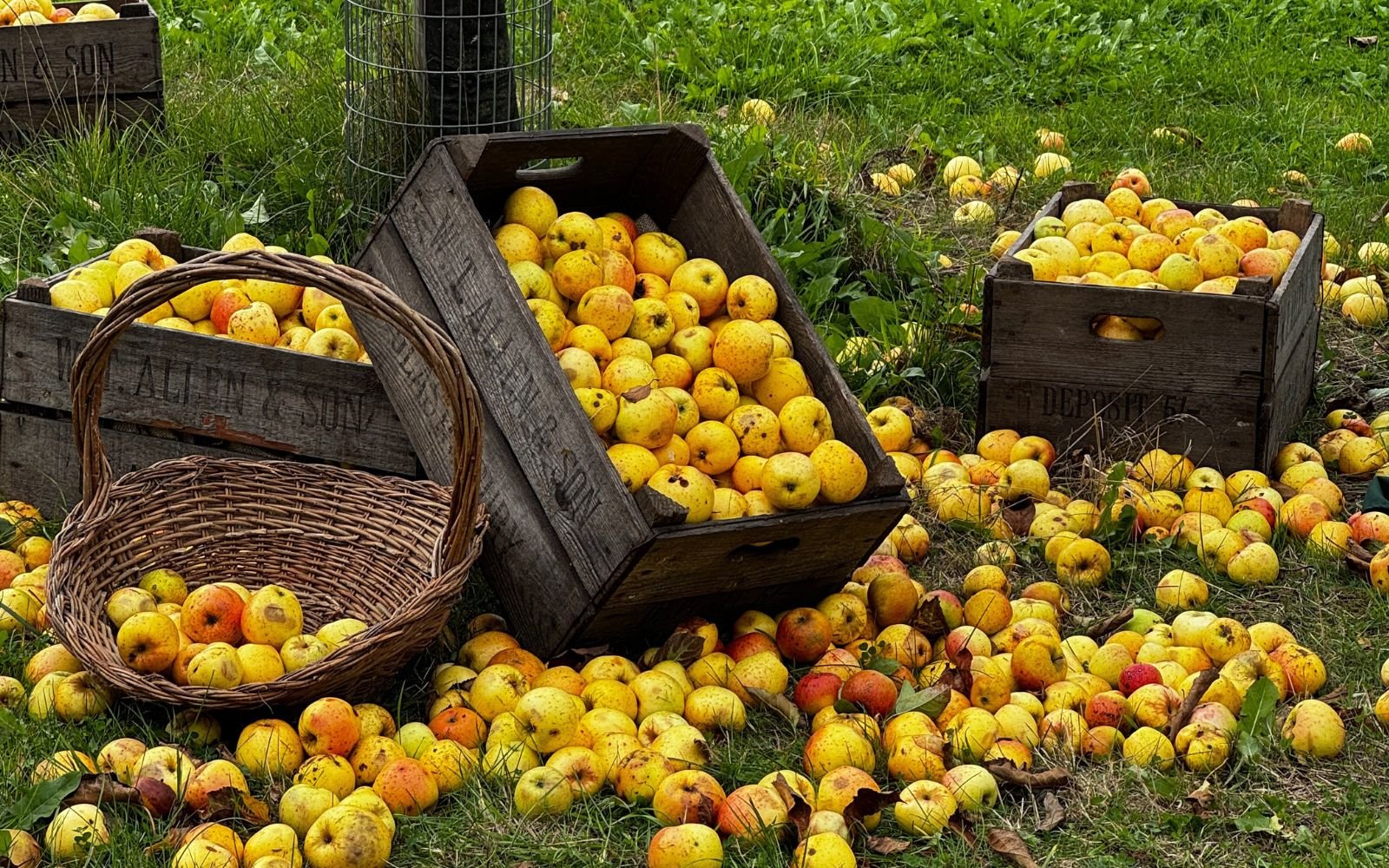
Forget Frosty Jack’s, proper British cider is having a moment
The surge in popularity of both natural wines and English wines is indicative of the fact that more and more drinkers are becoming interested in the provenance and craft behind what’s in their glasses, as well as the taste. Ciders have been starting to get the same love – we spotlighted new wave ciders on the market two summers ago – and it’s only getting stronger.
There are more bottles than ever on the market that showcase the complexity and quality that cider can have when it’s made from 100% freshly pressed juice, rather than watered down or made from concentrate varieties you see on supermarket shelves. Ciders made using the pet-nat method – yep it’s not just a wine style – are juicy and drinkable, just like your fave glou glou wines. If you’re watching your booze consumption, or your wallet (or both), ciders are lower in ABV and price than wines.
A note on terminology: cyder, spelled with a ‘y’, indicates artisanal quality, whereas cider, spelled with an ‘i’, can be applied to a mass-produced liquid. Think of it like olive oil – cyder, like extra virgin olive oil, is made from the first pressing of the apples, whereas cider can be made by diluting some of that leftover pulp.
2025 has been a cracking year for British cider. A great spring blossom with no late frost and a long, hot summer (the hottest one on record) has led to a bumper crop of apples, with low disease levels and high sugar content. The increased sugar levels are perfect for fermentation and will also bump up the ABV, giving this year’s ciders more structure, character and concentrated flavour.


We asked Luke Benson, who runs the cyder business at The Newt in Somerset – where he helps the team craft cyders that really showcase the apples and are made with the same care as fine wines, for some top tips for cider first-timers or people who only know traditional scrumpy cider.
“I would suggest heading to your local independent bottle show and exploring what fine ciders they have – they are usually found in 750ml bottles,” says Luke. “They tend to be more refined and balanced than scrumpy and more akin to Fine Wines. They’re worlds apart from the commercial ciders most people know.”. Serving ciders slightly chilled rather than ice cold will also help you taste the nuances, and you can try pairing ciders with food just as you would wine.
He’s also recommended five bottles that you can enjoy at home – start stocking up for Christmas now.
Wyvern Wing, The Newt
Inspired by Rieslings and Pinot Gris from Alsace, this cider can be enjoyed in place of white or rosé wine.
Shop here

Commix 2022, Wilding Cider
An off dry table cider with savoury notes making it a great pairing for food.
Shop here

Stoke Red Bottled Fermented Sparkling Cider, Burrow Hill
Made from Stoke Red apples, this cider is super dry, full-bodied and has a woody spiciness that makes it a great aperitif.
Shop here

Orchard Amble, The Newt
Toffee, baked apple and tropical notes make this cider a real all-rounder – pair with anything, anytime.
Shop here.

Downstream – Traditional Method Cider 2021, Find & Foster
Made using the traditional method, this cider is dry and vibrant, with a nice minerality offsetting the fruit.
Shop here

British ciders is the fourth article in our Pour Decisions series. If you liked this, check out our pieces on DILF wines, Claret and Dry Tokaji. Cheers!
Source link







